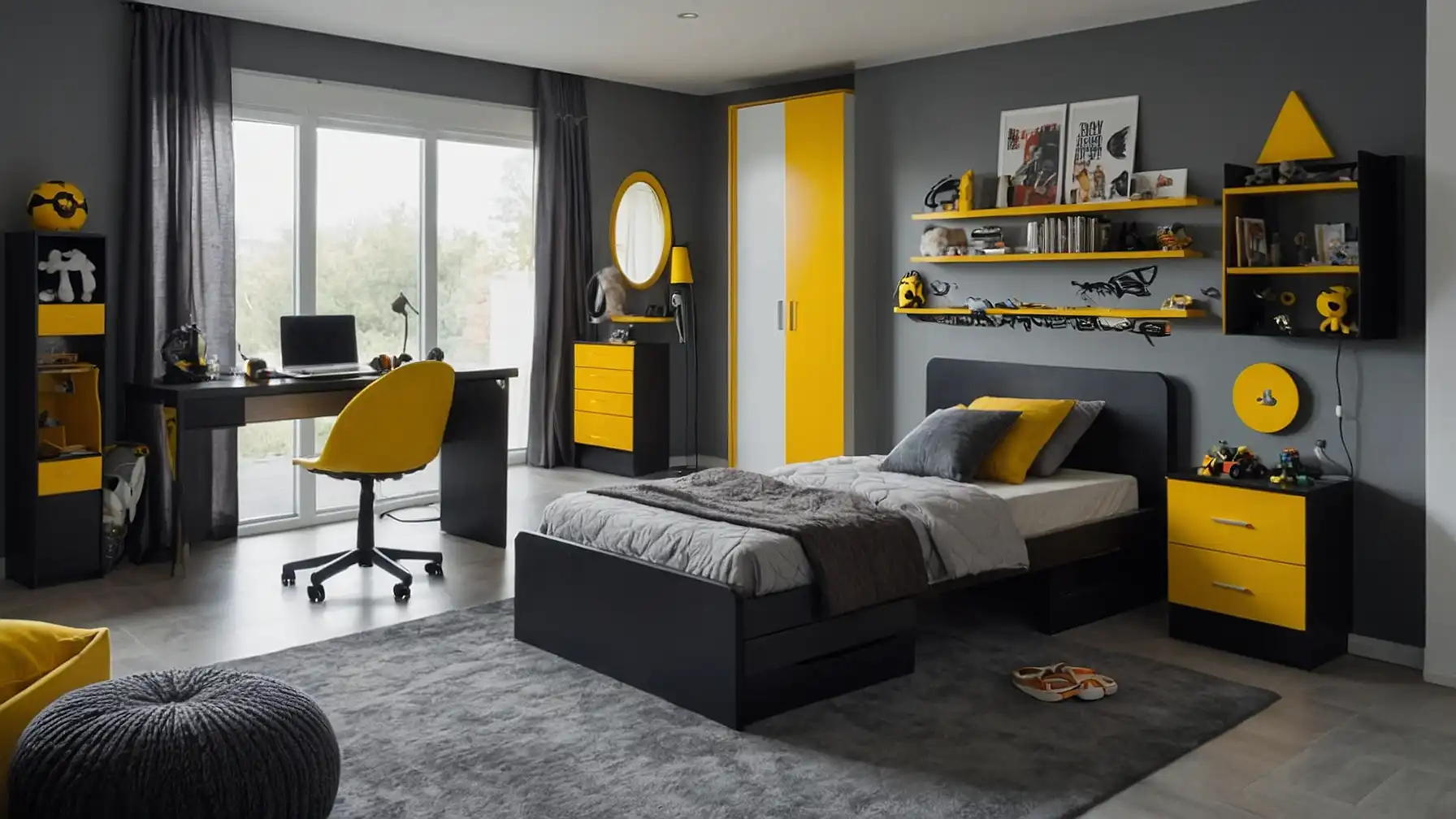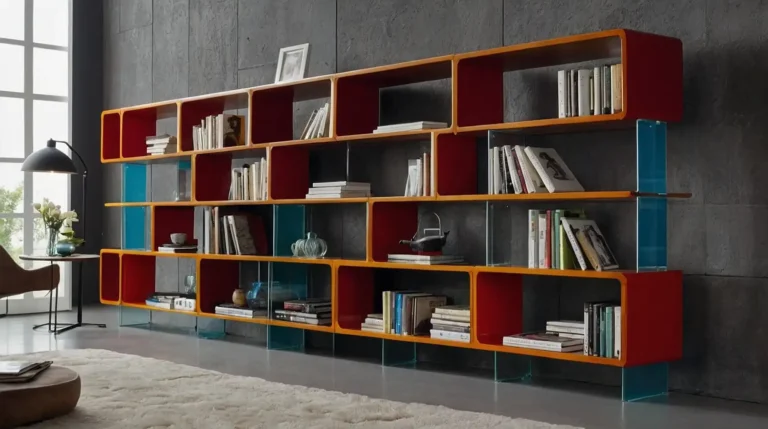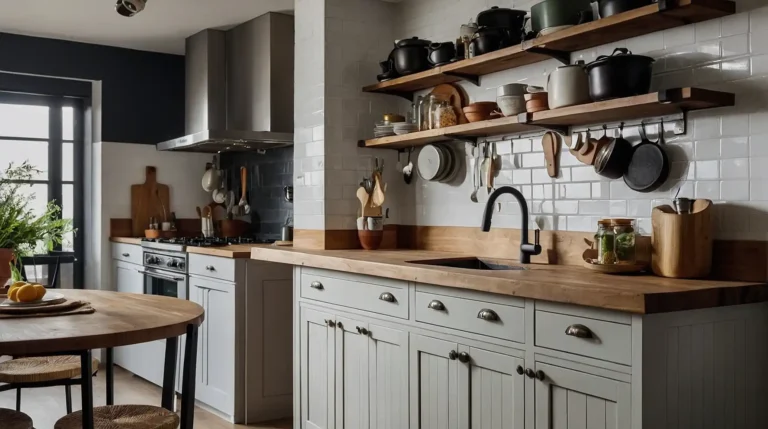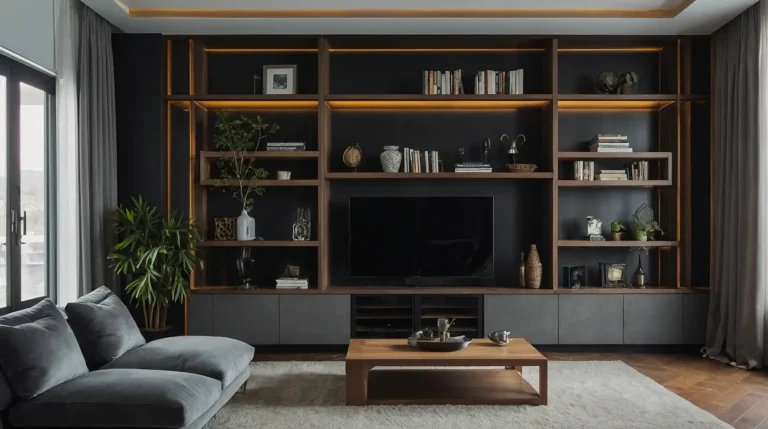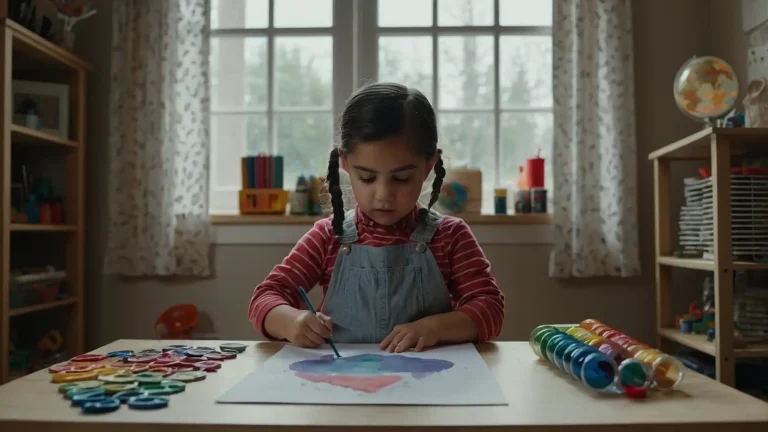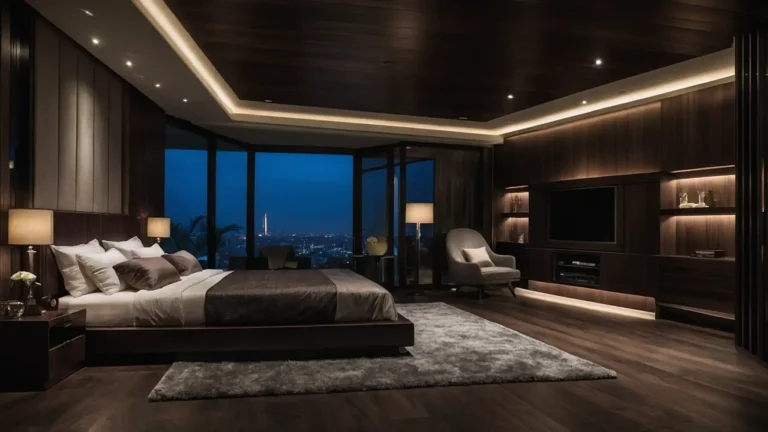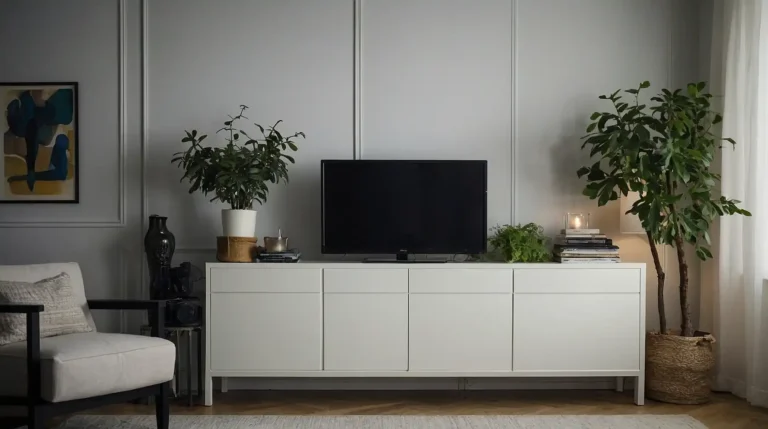19 Young Boys Bedroom Ideas
Creating the perfect bedroom for your young son combines fun themes with practical functionality.
The right design grows with your child while reflecting his personality and interests.
From adventure-themed spaces to organized storage solutions, these ideas balance playfulness with practicality.
You’ll discover options for every budget and room size.
These creative concepts help you design bedrooms that inspire imagination while promoting good sleep habits.
Let’s explore ideas that make bedtime exciting and mornings easier.
1: Create an Adventure Map Wall
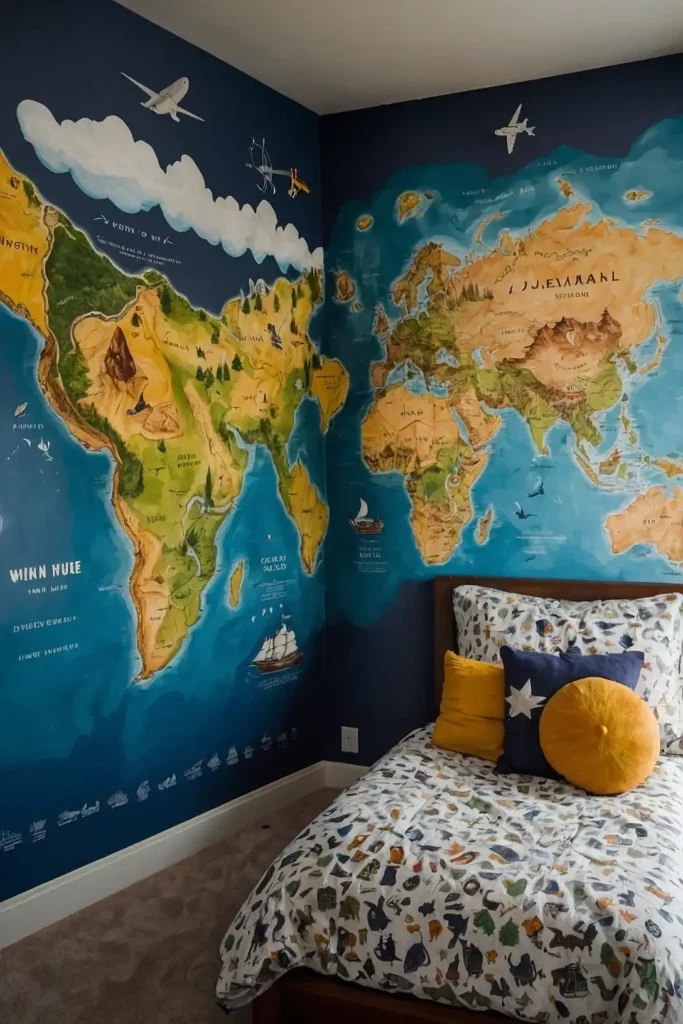
Transform one wall into a large world map using removable wall decals or painted murals.
Add pins or stickers to mark places your family has visited or dreams of exploring.
Include a small shelf below for travel books and adventure stories.
This educational element sparks curiosity about geography and different cultures worldwide.
You’ll inspire wanderlust while creating an interactive learning environment.
This theme grows with your child and encourages family discussions about travel and exploration.
2: Design a Sports Theme Corner
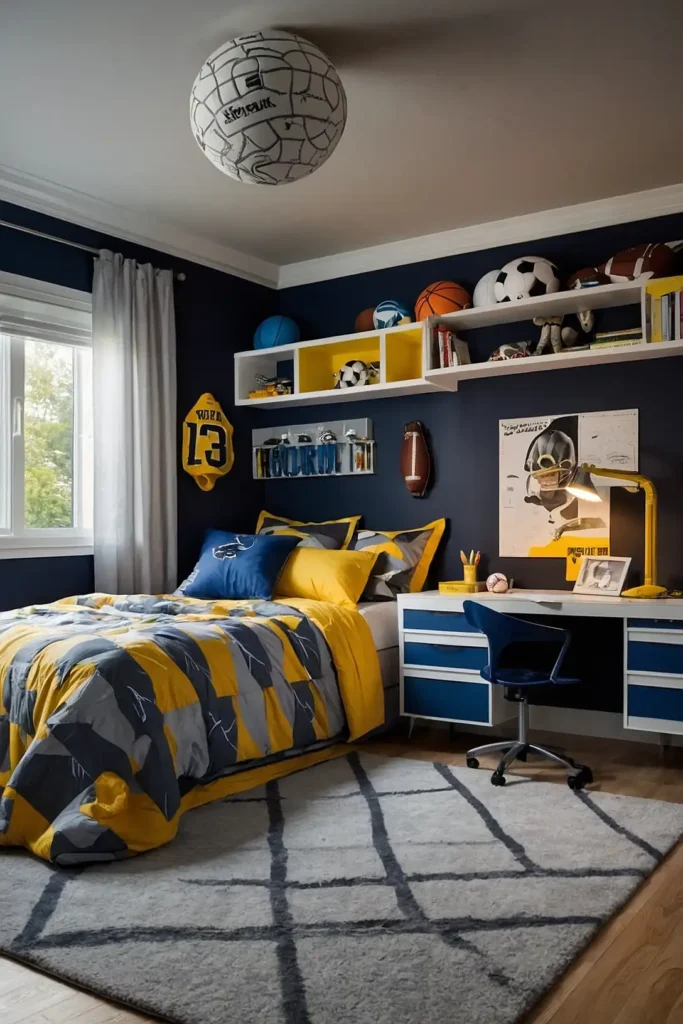
Dedicate one area to your child’s favorite sport with team colors, memorabilia, and equipment storage.
Include hooks for jerseys and shelves for trophies or balls.
Add a small basketball hoop on the door or wall-mounted sports equipment.
Choose bedding and accessories featuring his favorite teams or sports motifs.
You’ll celebrate his athletic interests while keeping sports gear organized and accessible.
This theme motivates active play and team spirit development.
3: Install a Loft Bed with Play Space
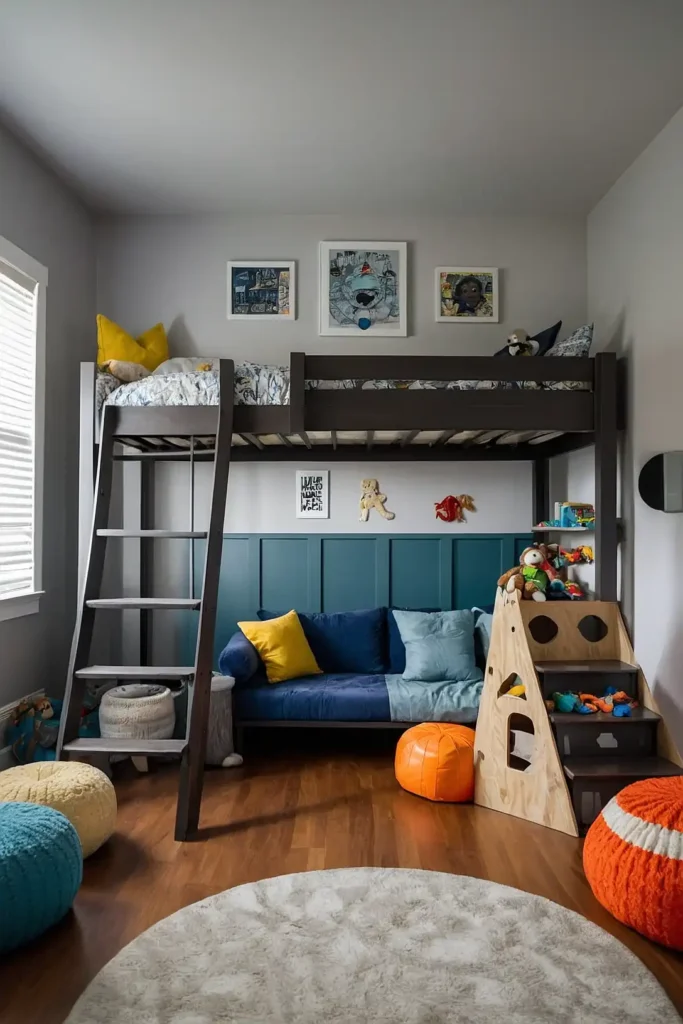
Elevate the bed to create valuable floor space underneath for play, study, or storage areas.
Choose sturdy loft beds appropriate for your child’s age.
Add a reading nook, desk area, or toy storage beneath the elevated sleeping space.
Include fun elements like slides or climbing walls if space allows.
You’ll maximize room functionality while creating an exciting sleeping arrangement.
Loft beds make small bedrooms feel larger and more adventurous for young boys.
4: Build a Superhero Headquarters
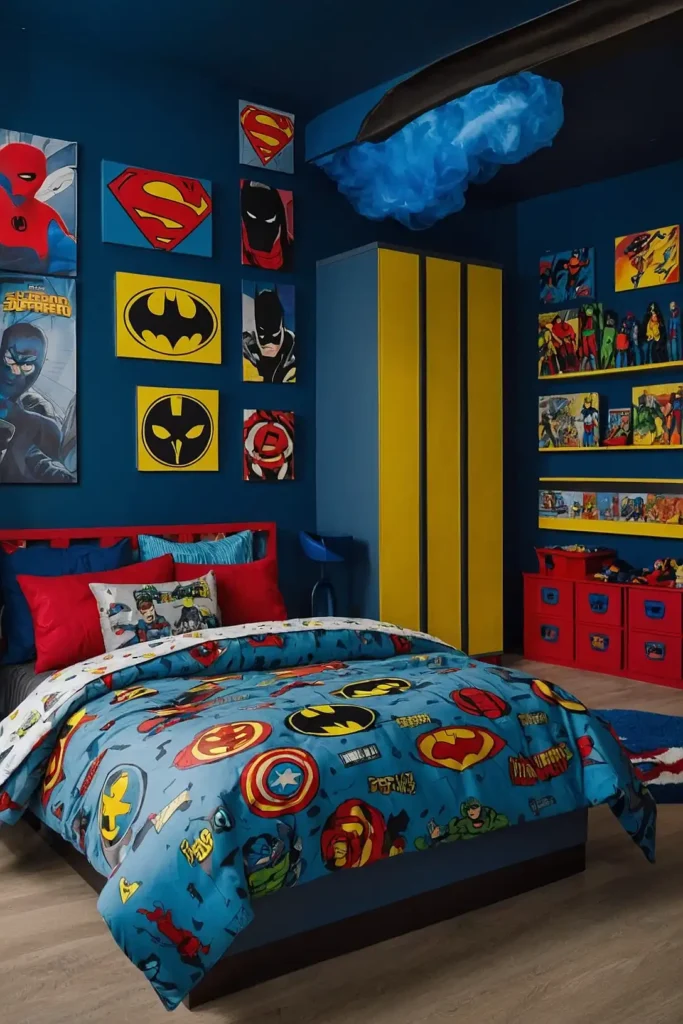
Design a superhero-themed room using bold primary colors and comic book-inspired decorations.
Add cityscape wall decals and superhero emblems throughout the space.
Include a cape storage area and mask display for dress-up play.
Choose bedding featuring favorite superheroes or comic book patterns for themed consistency.
You’ll create an empowering environment that encourages imaginative play and storytelling.
Superhero themes help boys develop confidence and moral reasoning through play.
5: Create an Outer Space Galaxy
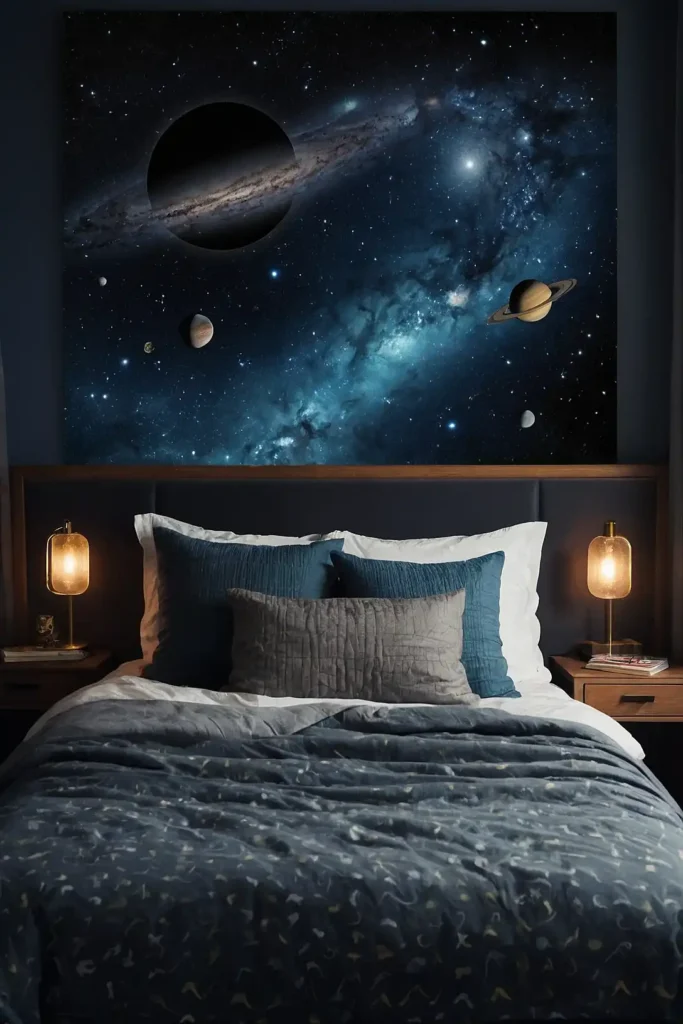
Paint the ceiling dark blue or black and add glow-in-the-dark stars for nighttime magic.
Include planet wall decals and space-themed bedding for complete immersion.
Add a telescope near the window for real stargazing opportunities.
Include books about space exploration and astronaut biographies for educational value.
You’ll inspire scientific curiosity while creating a calming sleep environment.
Space themes encourage STEM learning and wonder about the universe beyond Earth.
6: Design a Woodland Forest Retreat
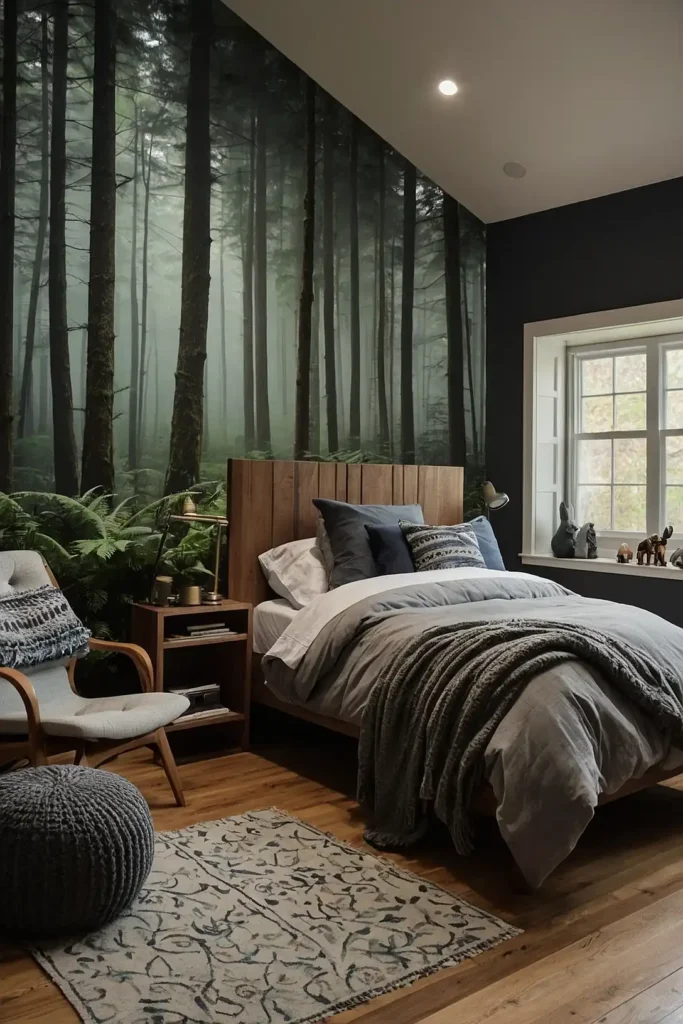
Use earth tones and forest animals to create a peaceful nature-themed bedroom.
Add tree wall decals and forest creature stuffed animals throughout the space.
Include camping elements like a small tent for reading or artificial campfire for storytelling.
Choose bedding with woodland patterns or camping motifs.
You’ll create a calming environment that connects your child with nature indoors.
Forest themes promote environmental awareness and peaceful sleep associations.
7: Install Creative Storage Solutions
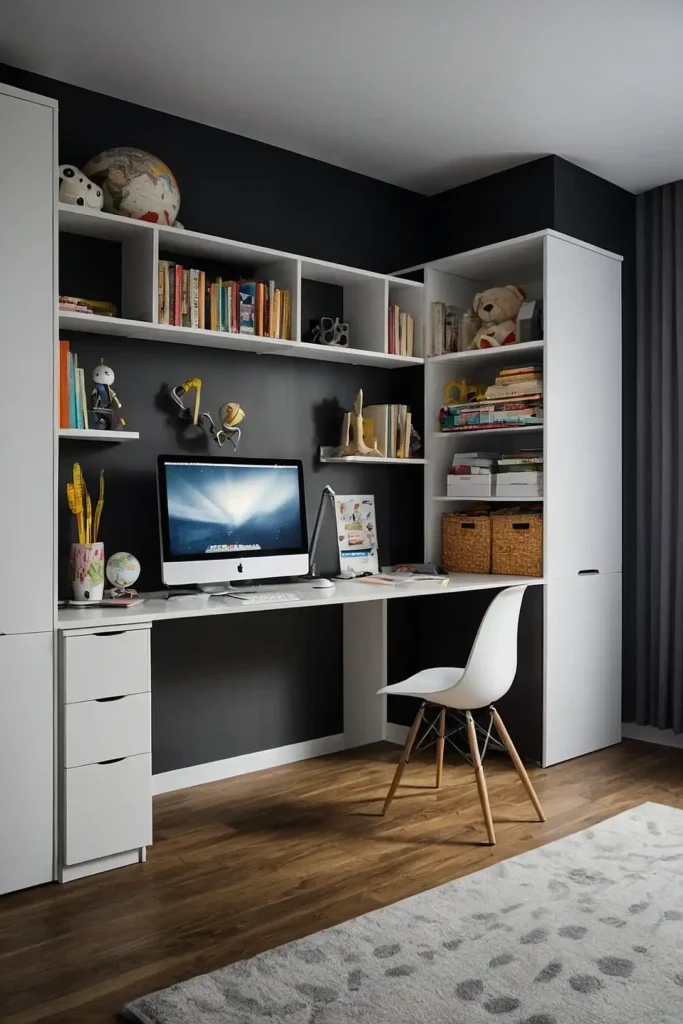
Add under-bed storage drawers, toy bins, and wall-mounted organizers to keep the room tidy.
Choose colorful storage options that match the room’s theme.
Include a toy rotation system to prevent overwhelming clutter while maintaining interest.
Label storage areas with pictures for non-reading children to encourage independence.
You’ll teach organizational skills while maintaining a clean, functional bedroom environment.
Good storage solutions make cleanup easier and more manageable for young children.
8: Create a Reading Adventure Nook
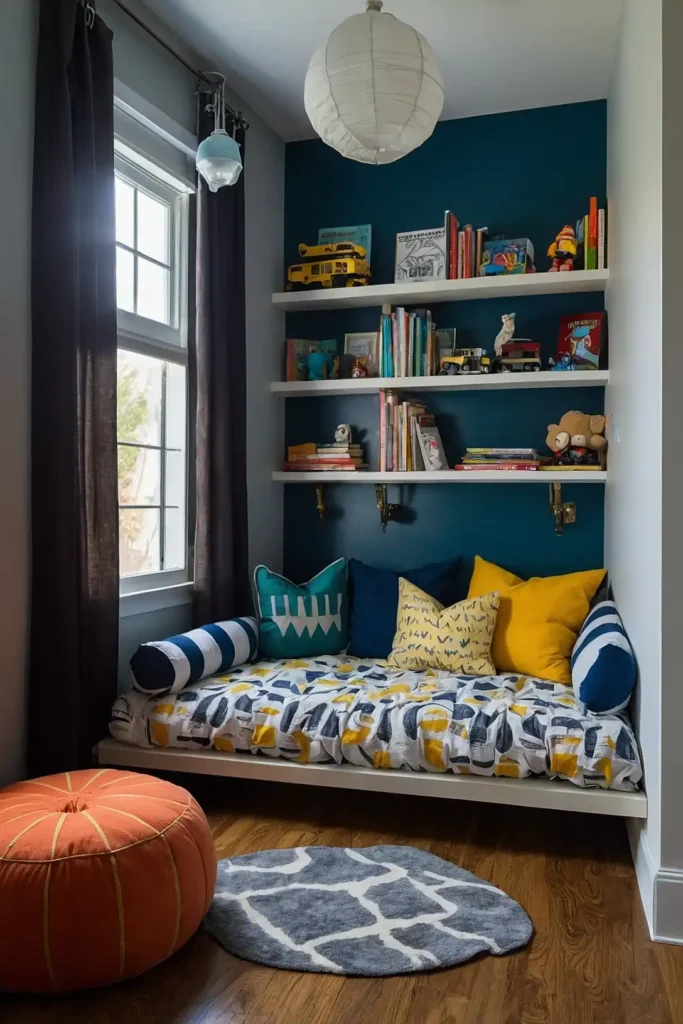
Design a cozy reading corner with comfortable seating, good lighting, and accessible book storage. Add soft pillows and blankets for comfort.
Include a small bookshelf at child height for easy book selection.
Create themed reading areas like a ship cabin or treehouse for imaginative environments.
You’ll encourage literacy development while providing a quiet retreat for rest and relaxation.
Reading nooks help establish positive associations with books and learning.
9: Add Interactive Wall Elements
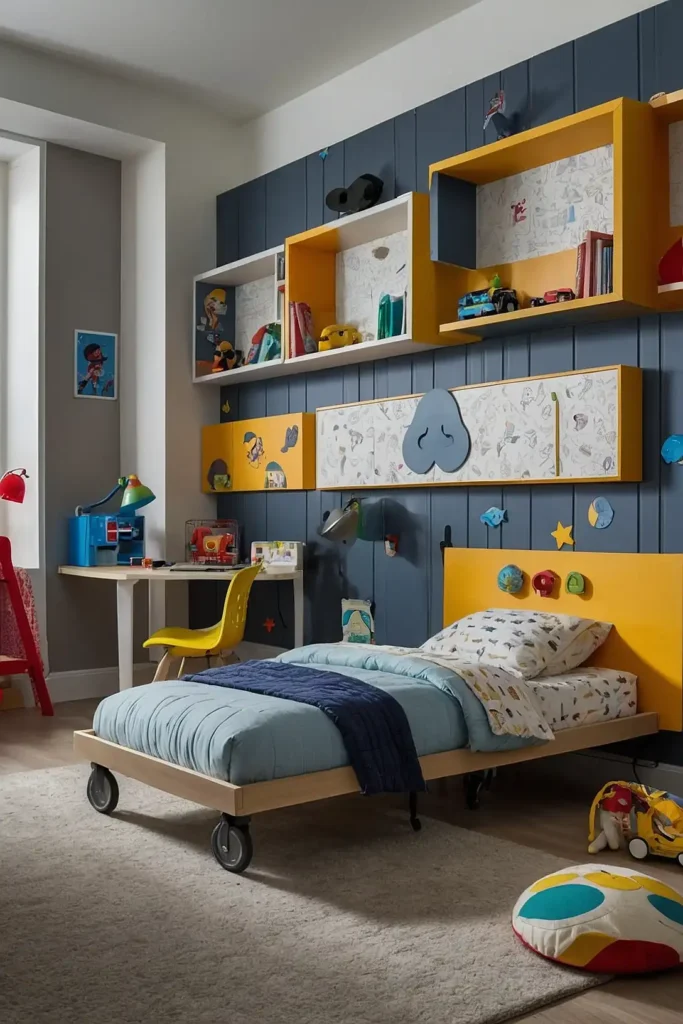
Install magnetic walls, chalkboard paint, or whiteboard surfaces for creative expression and learning activities.
Include art supplies storage nearby for easy access.
Add educational posters like alphabet charts, number lines, or science diagrams appropriate for your child’s age.
Rotate displays based on current learning interests.
You’ll create dynamic learning environments that adapt to changing educational needs.
Interactive walls encourage creativity while supporting academic development at home.
10: Design a Transportation Theme
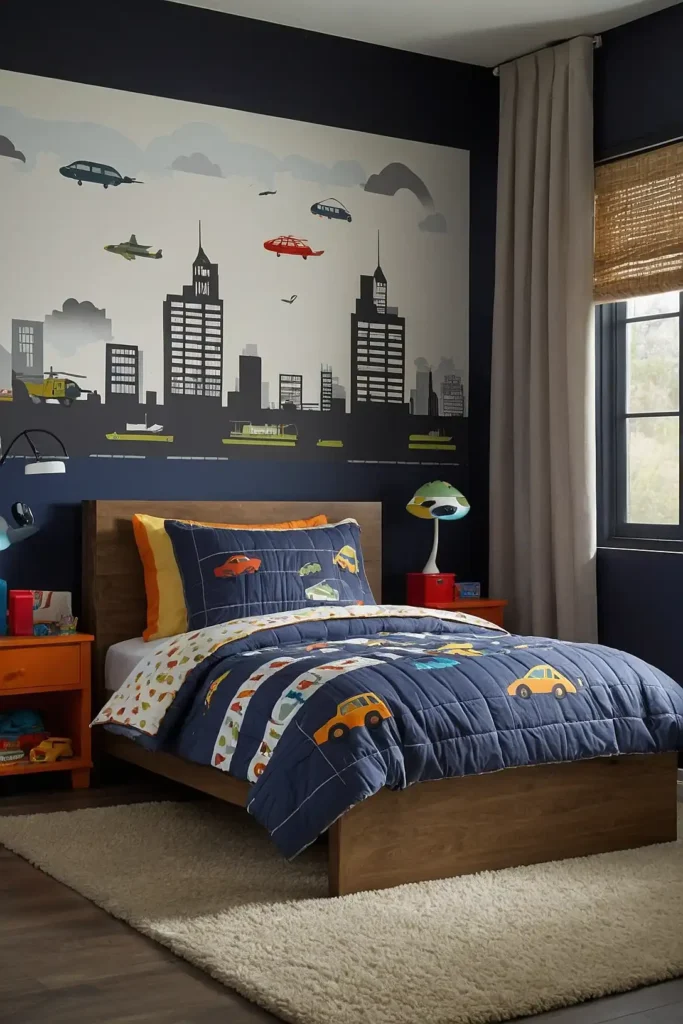
Incorporate cars, trains, planes, or boats throughout the room using wall decals, bedding, and toy displays. Add a road map carpet for floor play.
Include vehicle-shaped furniture like car beds or train table storage.
Display model cars, planes, or trains on floating shelves for decoration.
You’ll celebrate his fascination with how things move while encouraging imaginative play scenarios.
Transportation themes support learning about physics and engineering concepts naturally.
11: Create Growth-Adaptable Furniture
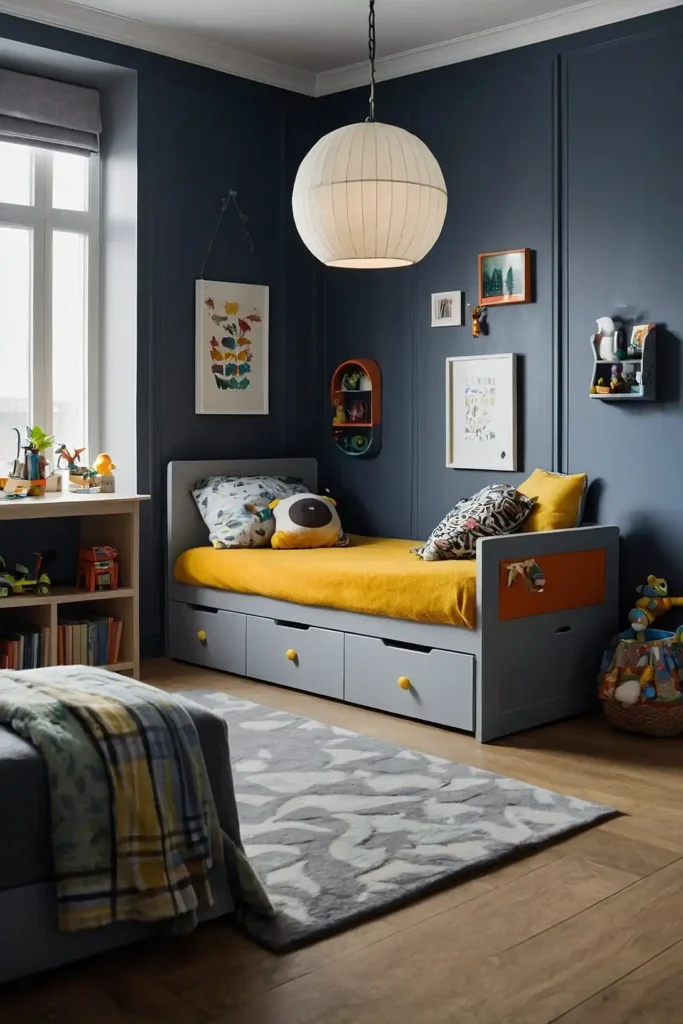
Choose furniture pieces that adjust as your child grows, like convertible cribs to beds or adjustable-height desks. Invest in quality pieces that last years.
Select neutral furniture colors that work with changing themes and interests. Add themed accessories that easily update without replacing major pieces.
You’ll save money while ensuring furniture remains functional throughout different developmental stages.
Adaptable furniture grows with your child’s changing needs and preferences.
12: Install Fun Lighting Options
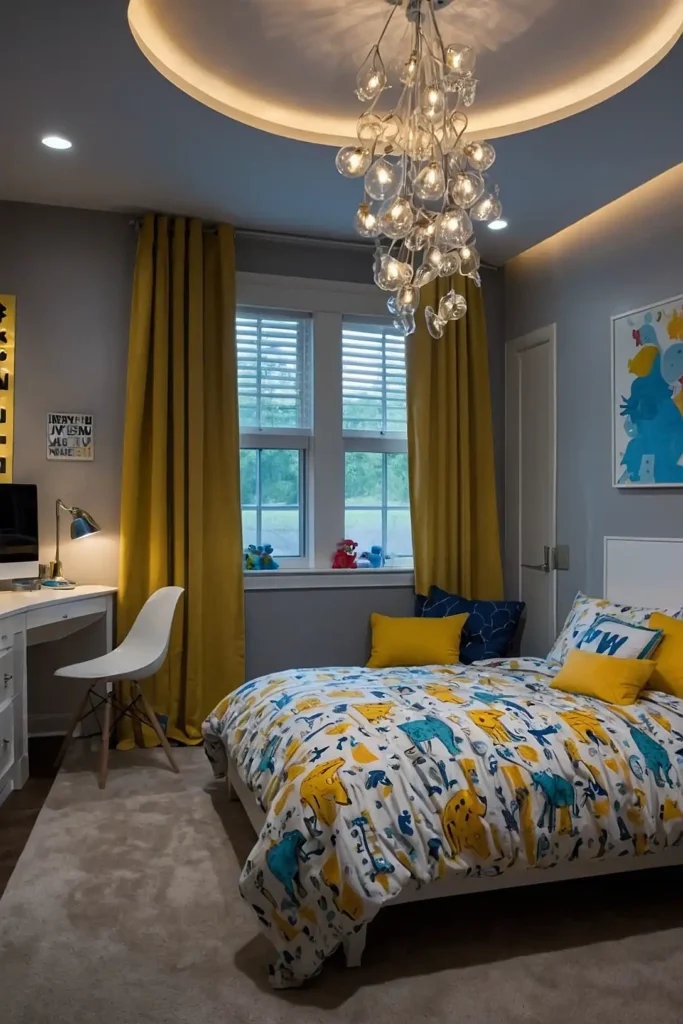
Add string lights, novelty lamps, or color-changing LED strips to create exciting ambiance during bedtime routines.
Include dimmer switches for versatile lighting control.
Choose theme-appropriate lighting like airplane pendant lights or star-shaped fixtures.
Ensure adequate task lighting for reading and homework activities.
You’ll make bedtime more appealing while providing functional lighting for various activities.
Creative lighting helps establish positive bedtime associations and routines.
13: Design an Art and Craft Station
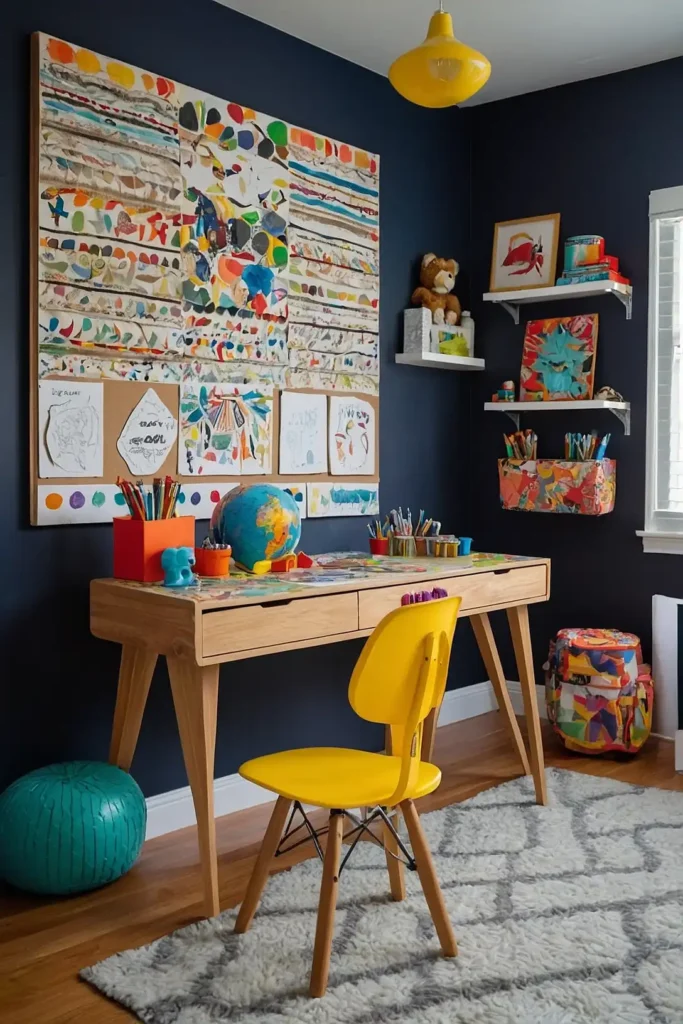
Set up a dedicated workspace with art supplies, paper storage, and display areas for finished projects.
Choose easy-to-clean surfaces and washable materials.
Include good lighting and comfortable seating appropriate for your child’s height.
Add cork boards or wire displays for showcasing artwork proudly.
You’ll encourage creativity while containing craft mess to designated areas.
Art stations support fine motor development and creative expression throughout childhood.
14: Add Educational Wall Charts
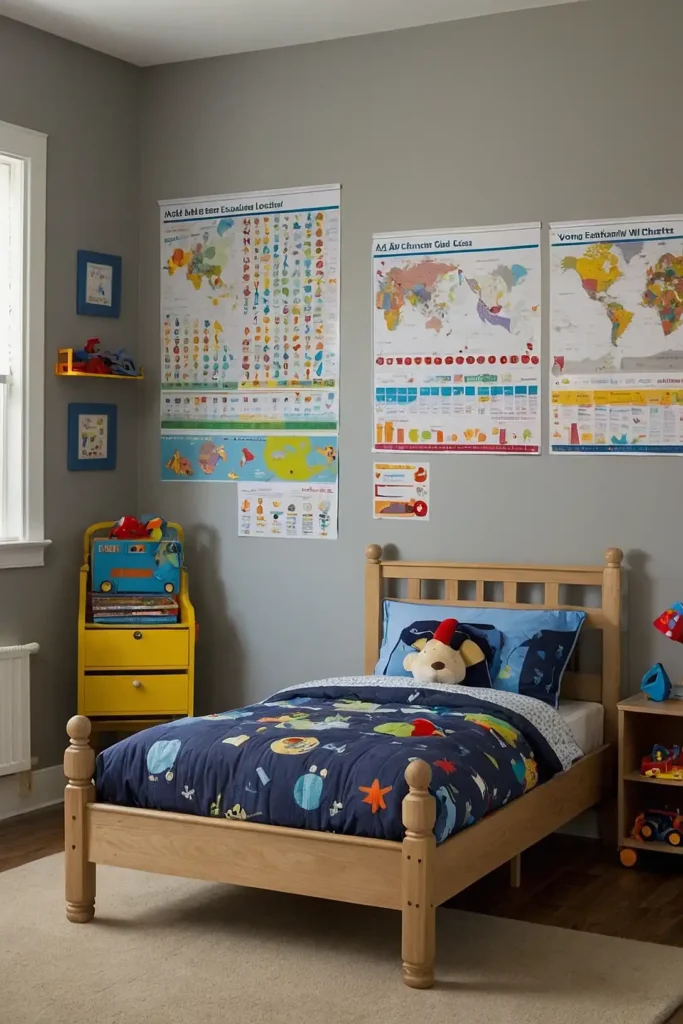
Display age-appropriate learning materials like growth charts, educational posters, or interactive learning boards.
Choose colorful, engaging designs that capture attention.
Include maps, alphabet charts, or number lines that support current learning goals. Rotate educational displays based on school curriculum and interests.
You’ll reinforce learning concepts while decorating with purposeful, educational elements.
Wall charts support academic development and create visually stimulating learning environments.
15: Create a Music and Movement Area
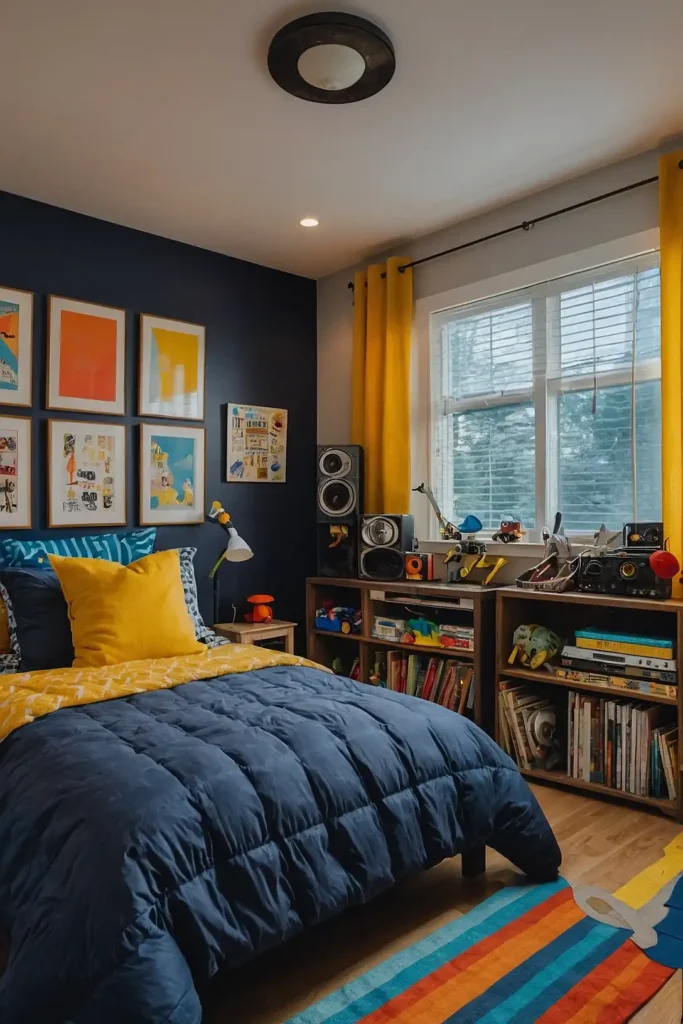
Include instruments, dance space, or music-themed decorations that encourage musical exploration and physical activity.
Add storage for musical toys and equipment.
Choose soft flooring or rugs for safe dancing and movement activities.
Include age-appropriate instruments like keyboards, drums, or guitars for experimentation.
You’ll support musical development while providing healthy outlets for energy and creativity.
Music areas help develop rhythm, coordination, and artistic expression.
16: Design Themed Bedding Displays
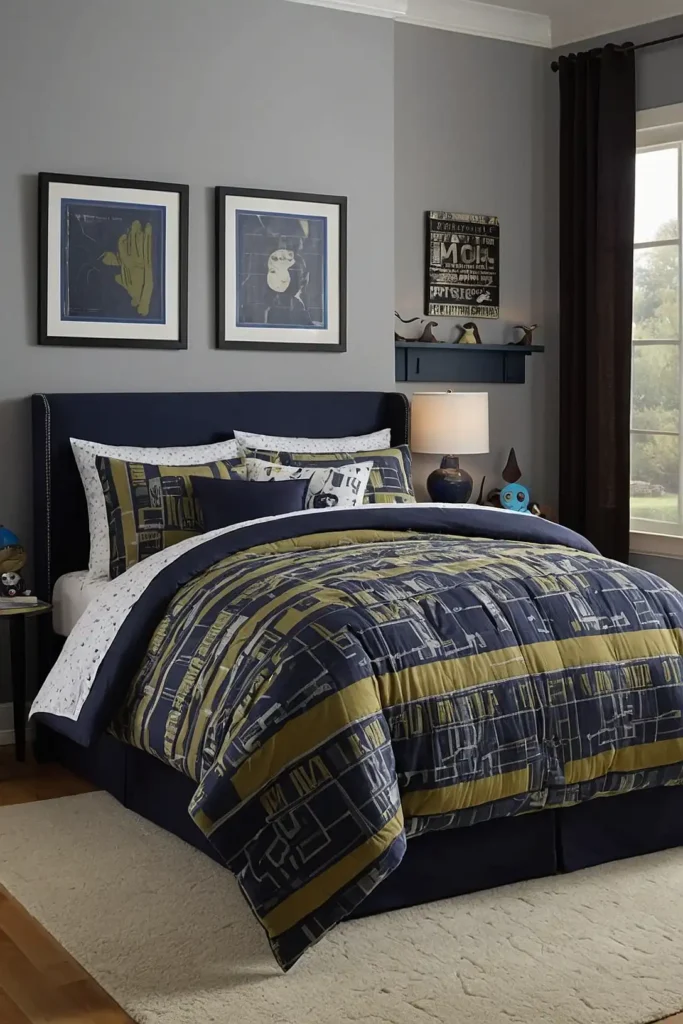
Choose bedding sets that reflect current interests and rotate them seasonally or as preferences change. Layer different textures and patterns for visual interest.
Include themed pillows, blankets, and stuffed animals that coordinate with overall room design.
Ensure bedding remains comfortable and age-appropriate for good sleep.
You’ll keep the room feeling fresh while accommodating changing interests affordably.
Themed bedding allows easy room updates without major renovation expenses.
17: Install Safety and Comfort Features
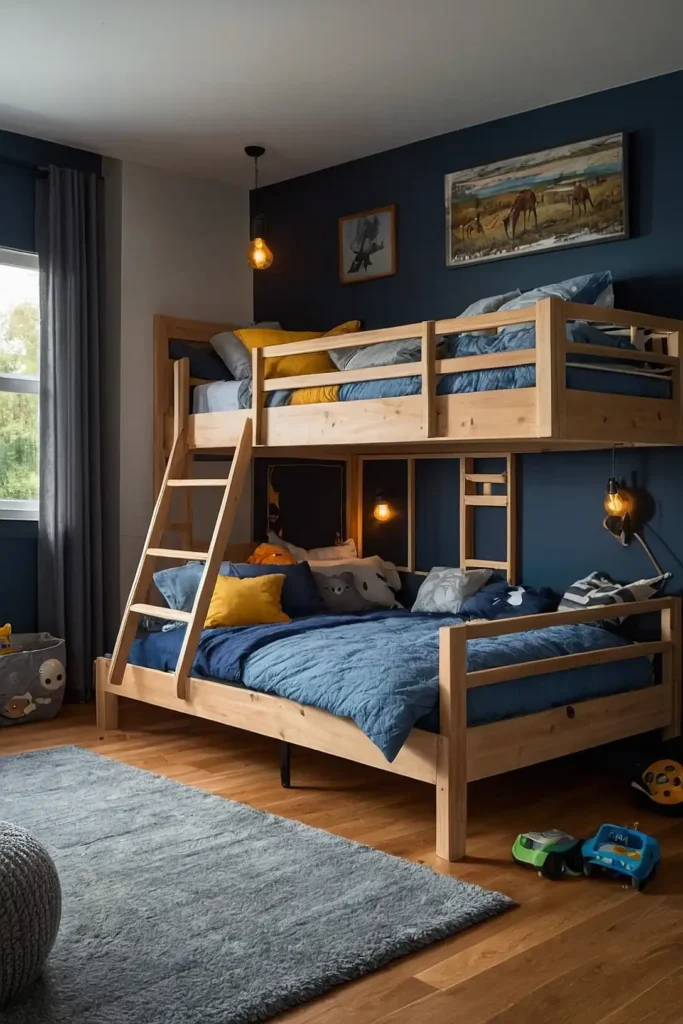
Add nightlights, outlet covers, and furniture corner guards appropriate for your child’s age.
Ensure window treatments provide adequate darkness for healthy sleep.
Include comfort items like favorite stuffed animals or special blankets within easy reach.
Create safe climbing and play areas with appropriate safety measures.
You’ll prioritize safety while maintaining fun, engaging environments for active play and rest. Safety features provide peace of mind for parents and children.
18: Create Organization Systems
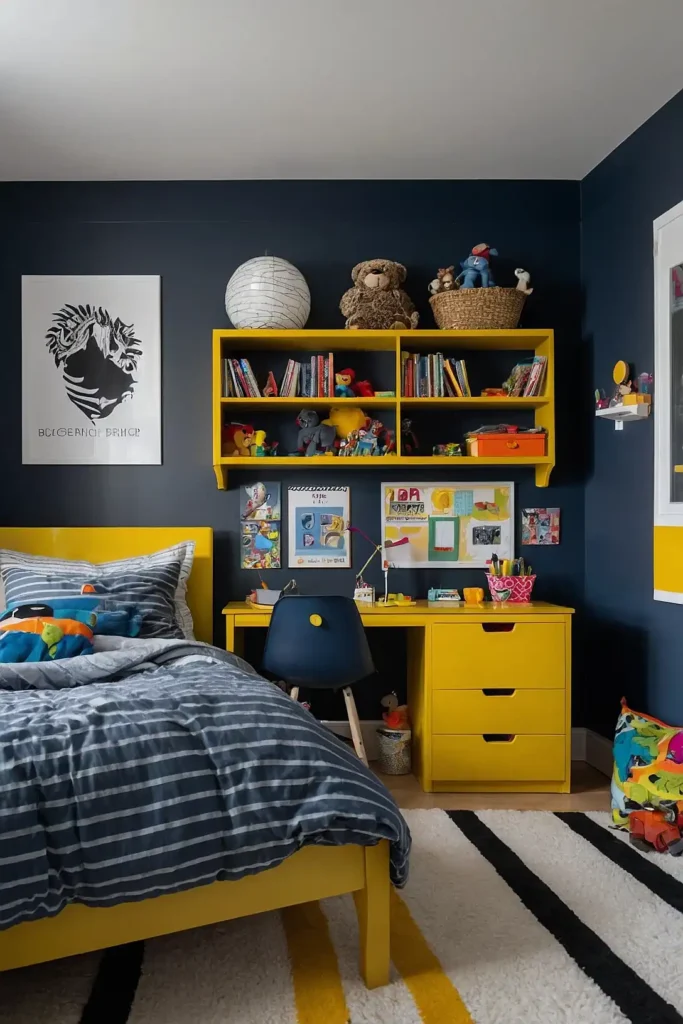
Establish daily routines using visual schedules, labeled storage, and accessible organization systems.
Include morning and bedtime routine charts for independence.
Add clothing organization systems appropriate for your child’s age and abilities.
Create designated spaces for school items, toys, and personal belongings.
You’ll teach life skills while maintaining organized, functional living spaces.
Organization systems support independence development and reduce daily stress for families.
19: Design Flexible Play Zones
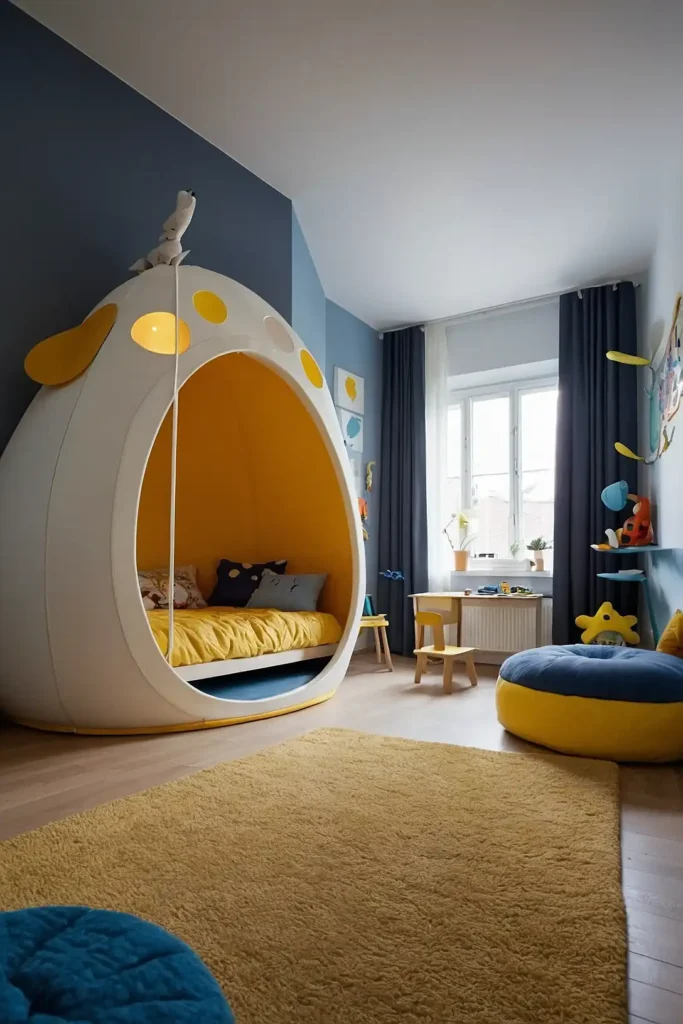
Create areas that adapt to different types of play using modular furniture, storage ottomans, or moveable elements.
Include space for both active and quiet play.
Add soft play mats, building block storage, and imaginative play props that encourage creativity.
Ensure play areas remain safe and age-appropriate for activities.
You’ll accommodate changing play needs while maximizing room functionality throughout different developmental stages.
Flexible zones grow with your child’s evolving interests and abilities.
Conclusion
Your young son’s bedroom becomes a haven for growth, learning, and imagination with thoughtful design choices.
These ideas create spaces that nurture development beautifully.

